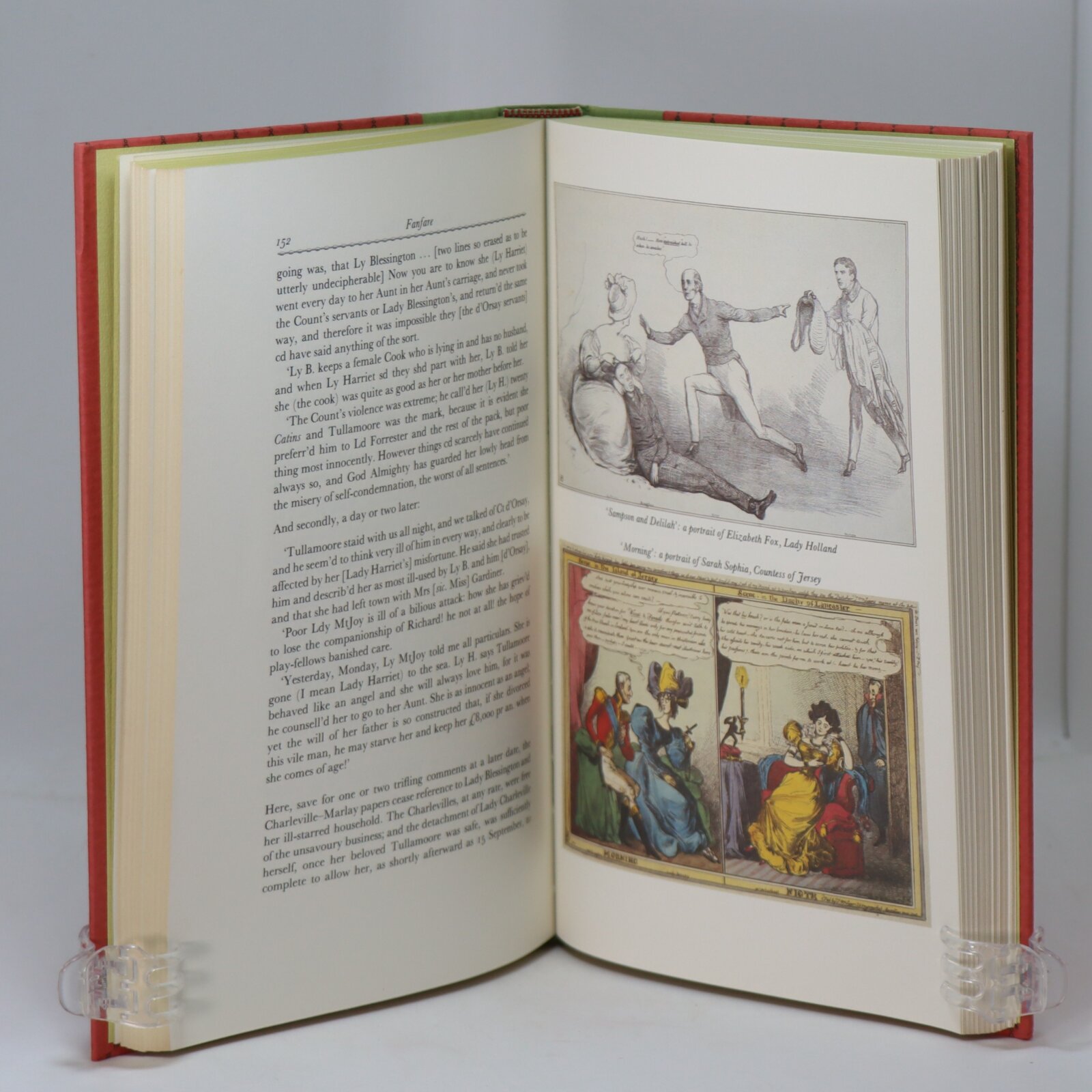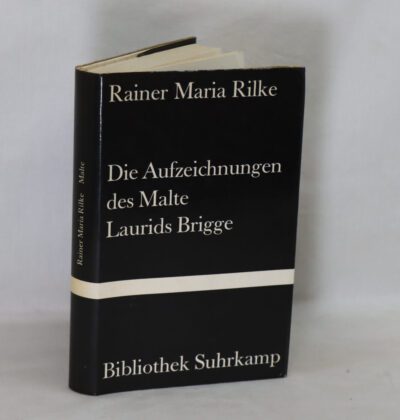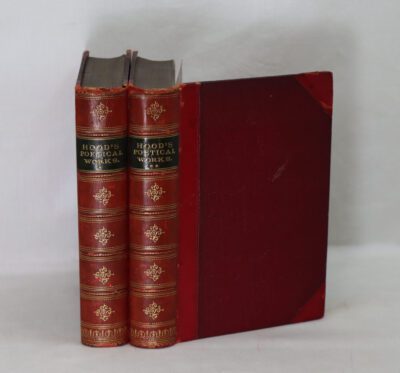Blessington-d' Orsay.
By Michael Sadleir
ISBN: 9780720606706
Printed: 1983
Publisher: Folio Society. London
Edition: Box worn.
| Dimensions | 17 × 26 × 3.5 cm |
|---|---|
| Language |
Language: English
Size (cminches): 17 x 26 x 3.5
Condition: Fine (See explanation of ratings)
Your items
Item information
Description
In a fitted box. Green cloth spine with gilt title. Pink boards with gilt vertical lines.
It is the intent of F.B.A. to provide an in-depth photographic presentation of this book offered so to almost stimulate your feel and touch on the book. If requested, more traditional book descriptions are immediately available.
History of this 19th century Irish literary family.
Marguerite Gardiner, Countess of Blessington (née Power; 1 September 1789 – 4 June 1849), was an Irish novelist, journalist, and literary hostess. She became acquainted with Lord Byron in Genoa and wrote a book about her conversations with him.
It was in Italy, on 1 December 1827, that Count D’Orsay married Harriet Gardiner, Lord Blessington’s only daughter by his former wife. The Blessingtons and the newly-wed couple moved to Paris towards the end of 1828, taking up residence in the Hôtel Maréchal Ney, where the Earl suddenly died at 46 of an apoplectic stroke in 1829. D’Orsay and Harriet then accompanied Lady Blessington to England, but the couple separated soon afterwards amidst much acrimony. D’Orsay continued to live with Marguerite until her death. Their home, first at Seamore Place, now named Curzon Square, and afterwards Gore House, Kensington, now the site of the Royal Albert Hall, became a centre of attraction for all that was distinguished in literature, learning, art, science and fashion. Benjamin Disraeli wrote Venetia whilst staying there, and it was at her home that Hans Christian Andersen first met Charles Dickens.
After her husband’s death she supplemented her diminished income by contributing to various periodicals as well as by writing novels. She was for some years editor of The Book of Beauty and The Keepsake, popular annuals of the day. In 1834 she published her Conversations with Lord Byron. Her Idler in Italy (1839–1840), and Idler in France (1841) were popular for their personal gossip and anecdotes, descriptions of nature and sentiment. Blessington became a gossip columnist for Dickens’ Daily News.
Early in 1849, Count D’Orsay left Gore House to escape his creditors; subsequently the furniture and decorations were sold in a public sale successfully discharging Lady Blessington’s debts. Lady Blessington joined the Count in Paris, where she died on 4 June 1849 of a burst heart. On examination it was found that her heart was three times normal size.
Michael Sadleir 25 December 1888 – 13 December 1957, born Michael Thomas Harvey Sadler, was a British publisher, novelist, book collector, and bibliographer.
Michael Sadleir was born in Oxford, England, the son of Sir Michael Ernest Sadler and Mary Ann Harvey. He adopted the older variant of his surname to differentiate himself from his father, a historian, educationist, and Vice-Chancellor of the University of Leeds. Sadleir was educated at Rugby School and was a contemporary of Rupert Brooke, with whom he was romantically involved, and Geoffrey Keynes. He then attended Balliol College, Oxford, where he read history and won the 1912 Stanhope essay prize on the political career of Richard Brinsley Sheridan. Before the First World War, Sadleir and his father were keen collectors of art, and purchased works by young English artists such as Stanley Spencer and Mark Gertler. They were amongst the first collectors (and certainly the first English collectors) of the paintings of the Russian-born German Expressionist artist Wassily Kandinsky. In 1913, both Sadleir and his father travelled to Germany to meet Kandinsky in Munich. This visit led to Sadleir translating into English Kandinsky’s seminal written work on expressionism, Concerning the Spiritual in Art in 1914. This was one of the first coherent arguments for abstract art in the English language and the translation by Sadleir was seen as both crucial to understanding Kandinsky’s theories about abstract art and as a key text in the history of modernism. Extracts from it were published in the Vorticist literary magazine BLAST in 1914, and it remained one of the most influential art texts of the first decades of the twentieth century.
Sadleir began to work for the publishing firm of Constable & Co. in 1912, becoming a director in 1920, and chairman in 1954, In 1920 as editor of Bliss and Other Stories by Katherine Mansfield for Constable he insisted on censoring sections of her short story Je ne parle pas français which show the cynical attitudes to love and sex of the narrator. Her husband John Middleton Murry persuaded Sadlier to reduce the cuts slightly (Murry and Sadleir had founded the avant-garde quarterly Rhythm in 1912).
After the end of World War I, he served as a British delegate to the Paris Peace Conference, 1919, and worked at the secretariat of the newly formed League of Nations. As a literary historian, he specialised in 19th century English fiction, notably the work of Anthony Trollope. Together with Ian Fleming and others, Sadleir was a director and contributor to The Book Handbook, later renamed The Book Collector, published by Queen Anne Press. He also conducted research on Gothic fiction and discovered rare original editions of the Northanger Horrid Novels mentioned in the novel Northanger Abbey by Jane Austen. Beforehand, some of these books, with their lurid titles, were thought to be figments of Austen’s imagination. Sadleir and Montague Summers demonstrated that they did really exist. In 1937, he was the Sandars Reader in Bibliography at Cambridge University, on the subject of the “Bibliographical Aspects of the Victorian Novel”. He was President of the Bibliographical Society from 1944 to 1946.
Sadleir’s best known novel was Fanny by Gaslight (1940), a fictional exploration of prostitution in Victorian London. It was adapted under that name as a 1944 film. The 1947 novel Forlorn Sunset further explored the characters of the Victorian London underworld. His writings also include a biography of his father, published in 1949, and a privately published memoir of one of his sons, who was killed in World War II.
The remarkable collection of Victorian fiction compiled by Sadleir, now at the UCLA Department of Special Collections, is the subject of a catalogue published in 1951. His collection of Gothic fiction is at the University of Virginia Albert and Shirley Small Special Collections Library.
Sadleir lived at Througham Court, Bisley, in Gloucestershire, a fine Jacobean farmhouse altered for him by the architect Norman Jewson, c. 1929. He sold Througham Court in 1949 and moved to Willow Farm, Oakley Green, in Berkshire.
Want to know more about this item?

Related products
Share this Page with a friend












